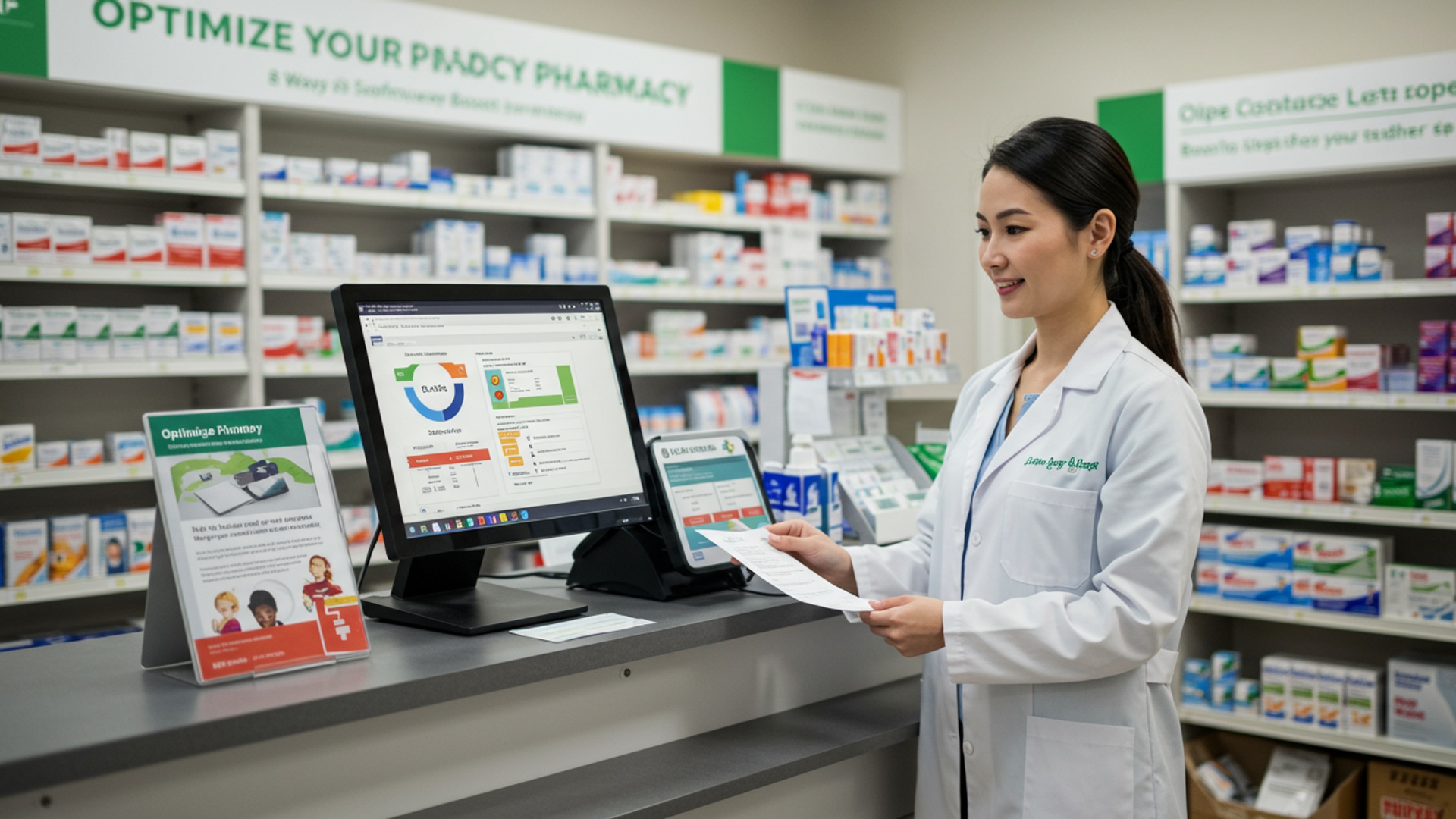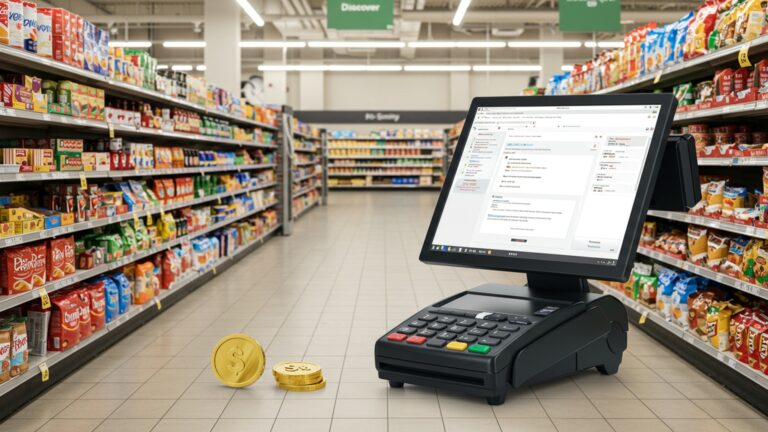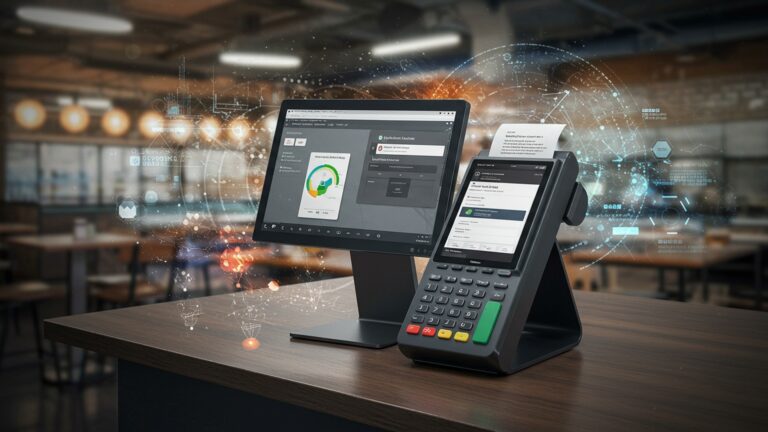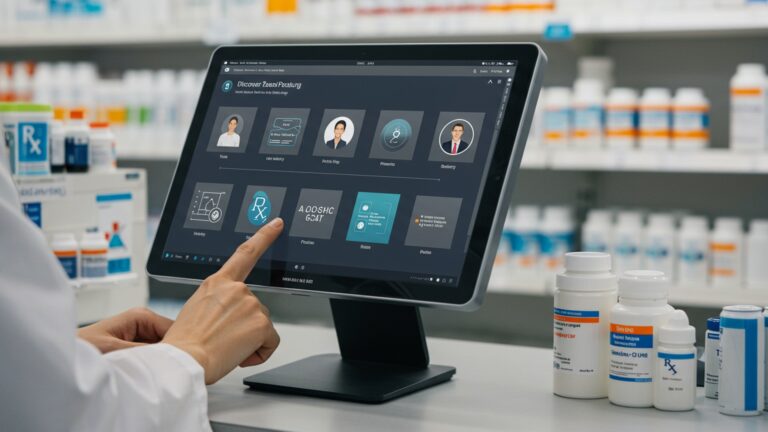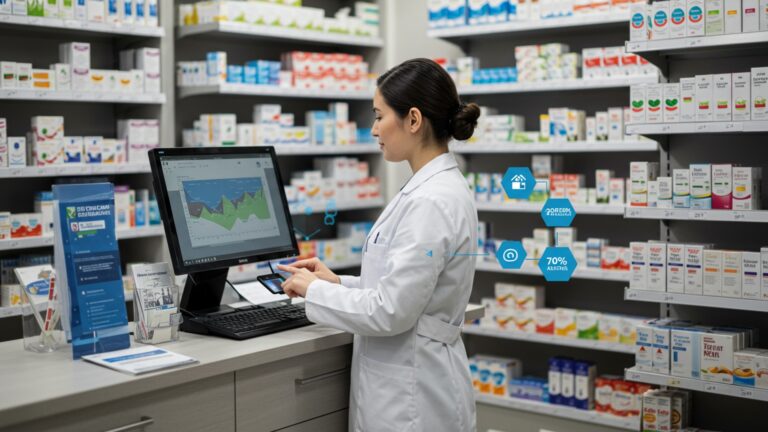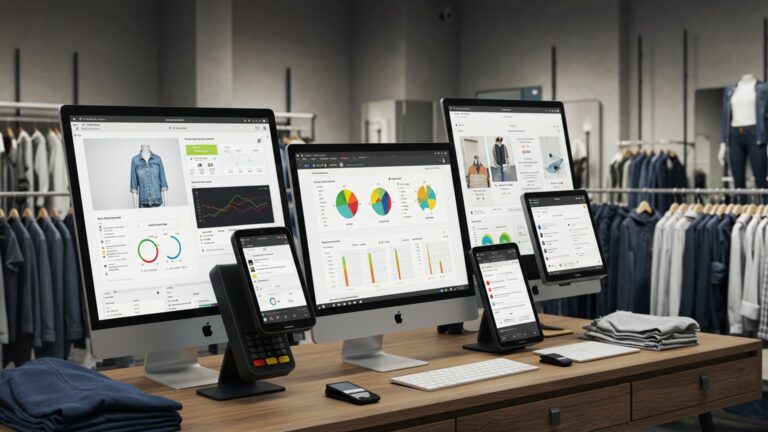Optimize Your Pharmacy 8 Ways POS Software Boosts Patient Care and Profit
In today’s rapidly evolving healthcare landscape, pharmacies navigate complex demands, from managing intricate inventory for high-demand medications like biologics to delivering personalized patient experiences that extend beyond mere prescription fulfillment. A cutting-edge pharmacy POS software is no longer just a transaction tool; it’s the operational backbone enabling this critical transformation. By seamlessly integrating inventory management, facilitating streamlined patient checkouts with options like contactless payments. powering robust data analytics for adherence programs, it empowers pharmacists to elevate patient safety and engagement. This technological advancement allows for proactive stock management, significantly reduces dispensing errors. frees up valuable staff time, directly enhancing both care quality and the pharmacy’s financial health in a competitive market.
1. Streamlined Workflow and Enhanced Efficiency
At the heart of any thriving pharmacy lies an efficient operation. Modern pharmacy POS software plays a pivotal role in streamlining daily tasks, significantly reducing manual errors and freeing up valuable staff time. This efficiency translates directly into faster service for patients and more productive use of resources for the pharmacy.
-
- Faster Transaction Processing
With integrated barcode scanning, automated pricing. various payment options (cash, credit/debit, mobile payments, FSA/HSA cards), transactions are completed in seconds. This reduces patient wait times, a critical factor in patient satisfaction, especially for those who are unwell or in a hurry.
-
- Reduced Manual Errors
Automated data entry for prescriptions, over-the-counter (OTC) sales. patient details minimizes the risk of human error, which can have significant consequences in a healthcare setting. Accurate data ensures correct billing, medication dispensing. inventory tracking.
-
- Optimized Staff Allocation
By automating routine tasks like inventory counts, reconciliation. sales reporting, pharmacists and technicians can dedicate more time to patient counseling, clinical services. other high-value activities, directly impacting patient care and satisfaction.
-
- Improved Front-End Management
Beyond prescriptions, the POS system efficiently manages the sale of front-end items, from health and beauty products to medical supplies, ensuring smooth operations across the entire retail space.
2. Advanced Inventory Management and Cost Reduction
Effective inventory management is crucial for both profitability and patient care. Running out of essential medications can compromise patient health, while overstocking leads to waste and tied-up capital. Pharmacy POS software provides sophisticated tools to optimize inventory, ensuring the right products are available at the right time.
-
- Real-Time Inventory Tracking
The software continuously updates stock levels as items are sold or received, providing an accurate, up-to-the-minute view of inventory. This allows pharmacies to know exactly what they have on hand, preventing stockouts and overstocking.
-
- Automated Reordering
Based on historical sales data, current stock levels. vendor lead times, the POS system can automatically generate purchase orders for replenishment. This proactive approach ensures popular items are always in stock and reduces the need for emergency orders, which can be more expensive.
-
- Waste Reduction and Expiry Management
By tracking expiry dates, the software can alert staff to products nearing expiration, allowing for timely sales promotions or returns to suppliers, thereby minimizing losses due to expired goods.
-
- Cost-Effective Purchasing
Detailed sales analytics empower pharmacies to identify slow-moving items and optimize purchasing strategies. This data-driven approach helps negotiate better prices with suppliers and reduces carrying costs, directly boosting profit margins.
3. Enhanced Patient Safety and Adherence
Patient safety is paramount in pharmacy practice. Pharmacy POS software integrates crucial safety features that help prevent medication errors and promote patient adherence, leading to better health outcomes.
-
- Prescription Verification and Alerts
When integrated with the pharmacy management system (PMS), the POS can flag potential issues during checkout, such as duplicate prescriptions, early refills, or discrepancies between the prescription and dispensed medication.
-
- Allergy and Drug Interaction Checks
Patient profiles stored within the system can include allergy details and other relevant health data. The POS can trigger alerts if a prescribed medication could interact negatively with another drug the patient is taking or if it conflicts with a known allergy.
-
- Medication Adherence Reminders
The software can be configured to send automated reminders to patients for prescription refills or medication pick-ups via SMS or email, helping improve adherence, especially for chronic conditions.
-
- Controlled Substance Tracking
For pharmacies dispensing controlled substances, the POS software can provide robust tracking and reporting capabilities, ensuring compliance with strict regulatory requirements and minimizing diversion risks.
4. Personalized Patient Engagement and Loyalty Programs
Building strong patient relationships is key to both patient care and business growth. Pharmacy POS software offers tools to personalize interactions and foster patient loyalty.
-
- Comprehensive Patient Profiles
Beyond basic contact details, patient profiles can store purchase history (both prescriptions and OTC), preferences, insurance details. communication history. This allows staff to offer more personalized service and recommendations.
-
- Targeted Marketing and Promotions
Leveraging purchase data, the POS system can help identify patient segments for targeted promotions. For example, patients who regularly buy specific OTC products might receive relevant discounts or data on related health services.
-
- Loyalty and Rewards Programs
Pharmacies can easily implement and manage loyalty programs through their POS software. Patients earn points or receive discounts based on their purchases, incentivizing repeat business and strengthening customer relationships.
-
- Seamless Communication
The software can facilitate personalized communication, from birthday wishes to health tips or announcements about new services, enhancing the patient’s connection with the pharmacy.
5. Robust Reporting and Data Analytics
In today’s data-driven world, informed decision-making is critical. Pharmacy POS software provides powerful reporting and analytics capabilities that offer deep insights into sales, inventory. operational performance, directly impacting profitability and service quality.
-
- Sales Performance Analysis
Generate reports on sales trends by product, category, time of day, or staff member. This data helps identify best-selling items, optimize staffing schedules. grasp peak business hours.
-
- Profitability Insights
review gross margins, cost of goods sold. operating expenses to identify areas for cost reduction and profit enhancement. Understanding which products or services are most profitable allows for strategic focus.
-
- Inventory Turnover Reports
Track how quickly inventory is sold and replaced, helping to refine purchasing strategies and minimize carrying costs.
-
- Patient Demographics and Purchase Patterns
grasp your patient base better by analyzing demographic data and purchasing habits. This details can guide marketing efforts, service development. inventory stocking decisions to better meet community needs, thereby improving patient care.
6. Seamless Integration with Pharmacy Management Systems (PMS)
The true power of pharmacy POS software is often realized through its seamless integration with the core Pharmacy Management System (PMS). This synergy creates a unified operational ecosystem, ensuring data consistency and a holistic view of every patient interaction.
-
- Unified Patient Records
Integration ensures that patient demographic details, prescription history, allergy alerts. insurance details are consistent across both the dispensing and sales functions. This eliminates redundant data entry and reduces the potential for errors.
-
- Real-Time Prescription Status
The POS can display the real-time status of prescriptions being filled, allowing staff at the front counter to provide accurate details to waiting patients, improving transparency and patient satisfaction.
-
- Automated Billing and Adjudication
When a prescription is sold, the integrated system can automatically process insurance claims, co-pays. patient responsibility, ensuring accurate billing and faster reimbursement for the pharmacy.
-
- Comprehensive Reporting
By combining data from both the POS and PMS, pharmacies gain a more complete picture of their operations, from prescription volume and sales to front-end product performance and patient engagement metrics. This consolidated data is invaluable for strategic planning.
7. Expanded Service Offerings and Revenue Streams
Pharmacies are evolving beyond just dispensing medications, becoming vital community health hubs. Pharmacy POS software supports this expansion by facilitating new service offerings and diversifying revenue streams, enhancing both patient care and profitability.
-
- Immunization Services
The POS can manage scheduling, billing. record-keeping for flu shots, travel vaccines. other immunizations. This allows pharmacies to offer crucial preventative care, improving community health.
-
- Clinical Services Billing
As pharmacies offer more clinical services (e. g. , medication therapy management, chronic disease management), the POS can handle the specific billing requirements, including tracking patient encounters and service codes, ensuring proper reimbursement.
-
- Durable Medical Equipment (DME) Sales
For pharmacies offering DME, the POS system can manage sales, rentals. billing for items like crutches, walkers, or blood glucose monitors, opening new revenue avenues while supporting patient needs.
-
- OTC Recommendations and Upselling
With access to patient profiles and prescription history, staff can use the POS to make informed recommendations for related OTC products, supplements, or medical devices, enhancing patient care through holistic advice and increasing sales.
8. Enhanced Compliance and Regulatory Adherence
The pharmacy industry is heavily regulated, requiring meticulous record-keeping and strict adherence to various laws and standards. Modern pharmacy POS software is designed to assist pharmacies in meeting these complex compliance requirements, protecting both the business and its patients.
-
- Audit Trail and Transaction History
Every transaction, adjustment. user action is logged and time-stamped, creating a comprehensive audit trail. This is invaluable for internal reviews, external audits. resolving any discrepancies.
-
- Controlled Substance Reporting
As mentioned, the software provides robust tools for tracking controlled substances from receipt to dispensing, generating the necessary reports (e. g. , for state Prescription Drug Monitoring Programs – PDMPs) to ensure compliance with federal and state regulations.
-
- HIPAA Compliance
While the POS itself doesn’t directly handle all HIPAA aspects, it contributes by securing patient financial and purchase data, limiting access to authorized personnel. ensuring data integrity, which is a critical component of patient privacy.
-
- Tax and Financial Reporting
Accurate sales tax collection, robust financial reporting. easy export of data for accounting purposes simplify compliance with tax laws and financial regulations, reducing administrative burden and potential penalties.
By leveraging these eight critical functions, pharmacies can transform their operations, delivering superior patient care while simultaneously achieving significant gains in efficiency and profitability. Investing in advanced pharmacy POS software is not just an upgrade; it’s a strategic move towards a more resilient, patient-centric. profitable future.
Conclusion
Optimizing your pharmacy isn’t merely about transactions; it’s about elevating patient trust and securing your financial future. As we’ve explored, a modern POS system is far more than a checkout tool – it’s the central nervous system of your operation, driving efficiency from inventory management to personalized patient interactions. My personal tip? Don’t just look for features; envision how the software empowers your pharmacists to spend more time consulting and less time on administrative tasks. Consider how real-time data from a robust POS can identify medication adherence patterns, allowing for proactive patient outreach – a critical step in today’s healthcare landscape. Embracing this technology isn’t an expense; it’s a strategic investment in a more compassionate, profitable future. By making this shift, you’re not just upgrading software; you’re future-proofing your pharmacy, ensuring it thrives in an evolving market. The time to innovate is now.
More Articles
7 Essential Strategies to Master Pharmacy Inventory Management Software
Unlock 7 Powerful Benefits From Pharmacy Management Software Solutions
Learn 8 Smart Ways POS Software Streamlines Inventory Management
Discover the 7 Best POS Software Solutions in India for Your Business
5 Essential Features Your POS Billing Software Needs for GST Compliance
FAQs
What exactly is this ‘8 Ways’ POS software you’re talking about?
It’s a specialized Point-of-Sale system designed specifically for pharmacies. It goes beyond basic sales transactions, offering advanced features to streamline operations, improve patient interactions. ultimately increase your pharmacy’s profitability. The ‘8 Ways’ refers to specific key areas where it delivers these benefits.
How does this POS software actually make patient care better?
It significantly improves patient care by speeding up prescription fills, managing inventory to prevent stock-outs of essential medications, easily accessing patient profiles for better counseling. flagging potential drug interactions in real-time. It also helps with appointment scheduling and communication, ensuring patients get their medications on time and receive personalized attention.
Can this really help my pharmacy make more money?
Absolutely! It boosts profit by optimizing inventory to reduce waste and spoilage, identifying popular products for better stocking decisions, streamlining billing and insurance claims to minimize errors and rejections. automating tedious tasks that save staff valuable time. This efficiency allows your team to focus on higher-value activities and serve more customers, directly impacting your bottom line.
Is it complicated to switch to a new POS system like this?
While any new system requires an adjustment period, modern pharmacy POS software is designed with user-friendliness in mind. Reputable providers offer comprehensive training and ongoing support to ensure a smooth transition, helping your staff get comfortable quickly without major disruptions to your daily operations.
What are some specific features that really stand out?
Key features often include robust inventory management with automated reordering, integrated prescription management, detailed patient profile tracking, powerful sales analytics and reporting, secure payment processing. efficient insurance claim submission. Many also offer loyalty programs and customer relationship management (CRM) tools to enhance customer retention.
My pharmacy is pretty small. Is this software still beneficial for me?
Yes, even smaller pharmacies can see significant benefits. The efficiencies gained in inventory control, patient management. billing free up valuable time for staff, allowing you to compete more effectively, improve customer service. scale your operations without necessarily needing to hire more people right away. It helps level the playing field.
How quickly can I expect to see results after implementing this?
While full optimization takes some time, many pharmacies start noticing improvements in efficiency and reduced errors within a few weeks or months. Tangible benefits like reduced inventory waste and faster claim processing can impact your bottom line relatively quickly, leading to a positive return on investment over time as you fully leverage all the features.

